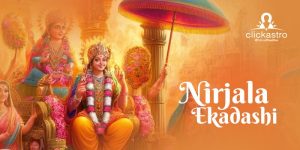Contents[hide]
Introduction
In the Hindu calendar, the addition of an extra month, known as Adhik Maas or Purushottam Maas, helps align the lunar and solar calendars. This year, in 2023, Adhik Maas falls between July 18th and August 16th, coinciding with the sacred festival of Adhik Maas Skanda Sashti.In this blog, we will explore the significance and rituals associated with the combination of Adhik Maas and Skanda Sashti, and how devotees can seek blessings during this auspicious time. Adhik Maas, also called Purushottam Maas or Mal Maas, holds a special place in the Hindu calendar. During this additional month, devotees believe that any religious activity and good karma performed yield manifold results. It is a time to engage in selfless actions without any expectations, and the benefits reaped during this period are considered exceptional. Lord Vishnu, the preserver of the universe, is worshipped as the main deity during Adhik Maas, and his blessings are said to be abundantly bestowed upon devotees.The Adhika Maas Skanda Sashti falls on July 23, Sunday.
The Legend Behind Adhik Maas:
The legend behind Adhik Maas explains why this additional month, which was initially considered “unclean,” gained significance and divine approval. According to the legend, when the lunar calendar was established, each of the twelve months was assigned a ruling deity except for the extra month, Adhik Maas. Feeling distressed and neglected, Adhik Maas, also known as Mal Maas, approached Lord Vishnu for help and refuge. Moved by Adhik Maas’s plight, Lord Vishnu, the preserver of the universe, embraced the month and bestowed upon it the name “Purushottam Maas,” meaning the “excellent month” or the “month dear to the Supreme Being.” In this act of embracing Adhik Maas, Lord Vishnu proclaimed its significance and elevated its status. He declared that any spiritual practices undertaken during this month would yield more fruitful results compared to other months. These practices include Japa (recitation of sacred mantras), Homa (ritual offerings to the sacred fire), Vrat (observance of fasting), and Katha (recitation or hearing of holy scriptures and stories). By assigning himself to Adhik Maas and giving it the name Purushottam Maas, Lord Vishnu emphasized the importance of this month and emphasized the potency of devotional acts performed during this period. The legend highlights Lord Vishnu’s compassion and his willingness to uplift and sanctify the month that was initially considered less auspicious. Devotees believe that by engaging in spiritual practices with sincerity and devotion during Adhik Maas, they can receive greater blessings, spiritual progress, and positive outcomes. It is a time to intensify one’s spiritual efforts and seek the divine grace of Lord Vishnu, the preserver, and sustainer of the universe.Skanda Sashti: Honouring Lord Muruga
Skanda Sashti, a prominent festival primarily celebrated in Southern India, reveres Lord Skanda, also known as Lord Muruga or Kartikeya. Lord Skanda is the son of Lord Shiva and the brother of Lord Ganesha. Skanda Sashti is observed on the sixth day (Shashti) of the lunar cycle. Devotees fast and offer their unwavering devotion to Lord Muruga, the God of war. The festival commemorates his victory over the demon Soorapadman and his siblings Tarakasura and Simhamukha.The History and Significance of Skanda Sashti:
The legend of Lord Muruga, also known as Lord Karthikeyan or Skanda, traces back to the divine manifestation of Lord Shiva’s third eye. According to the legend, Lord Shiva emitted six sparks of immense radiance from his third eye. These sparks transformed into six divine children. The six Kartika sisters, known as the Krittikas, were entrusted with the care and nurturing of these divine infants. As the six children grew, they eventually merged into one extraordinary being with six faces, representing the directions, twelve hands, and two feet. This merged form came to be known as Lord Karthikeyan or Lord Muruga. Lord Muruga symbolises divine wisdom, strength, valour, and compassion. Lord Muruga, with his formidable attributes, became a revered deity and a revered warrior. He is often depicted as a young, handsome god riding a peacock, his chosen vahana (vehicle). The peacock symbolises grace and beauty. Lord Muruga also carries a powerful weapon called the Vel, a divine lance associated with his victory over evil forces. One of the significant feats of Lord Muruga was his defeat of the demon Surapadman, who had been causing immense chaos and suffering on Earth. In a fierce battle, Lord Muruga confronted Surapadman and ultimately vanquished him, bringing peace and harmony back to the world. During this battle, as Surapadman was slain, two birds emerged from his body: a peacock and a rooster. The peacock became Lord Muruga’s vahana, representing beauty and triumph, while the rooster became a symbol of victory, depicted on his flag. This legend signifies the divine triumph of good over evil and the restoration of righteousness. The legend of Lord Muruga and his victory over Surapadman serves as an inspiration for devotees, highlighting the power of righteousness, wisdom, and courage in overcoming adversities. Lord Muruga is revered as the embodiment of divine qualities and is worshipped for blessings in various aspects of life, including wisdom, success, protection, and spiritual growth.Celebrating Adhik Maas Skanda Sashti:
Devotees follow certain rituals and practices during Adhik Maas Skanda Sashti to seek the blessings of Lord Muruga. Here are some essential aspects of the celebration:Fasting:
Observing a fast for six days during Skanda Sashti is a customary practice for devotees. During this period, they abstain from consuming certain foods as an act of purification and devotion. Some common dietary restrictions during this fast include avoiding meat, onions, garlic, and alcohol. Onions and garlic, although they are widely used in cooking, are believed to possess properties that may increase physical and mental agitation. Hence, they are avoided during periods of religious observances and meditation. Instead of consuming restricted foods, devotees opt for a diet that primarily consists of fresh fruits during the six-day fast. Fresh fruits are considered pure and sattvic (pure and harmonious) in nature, which is believed to enhance spiritual well-being and clarity of mind.Prayer and Worship:
Begin by selecting a suitable location in your home or a designated puja room where you can set up an idol or picture of Lord Muruga. Clean the area and decorate it with flowers, rangoli (colour powders), and other auspicious items. Light a diya (oil lamp) near the idol. Take pure water or milk in a clean vessel and offer it to the idol as an act of purification and reverence. As a mark of respect and devotion, present new clothing to the idol of Lord Muruga. It is customary to offer traditional attire such as a dhoti (men’s garment) or a saree (women’s garment). Prepare a simple and sattvic (pure) meal or prasad to offer to Lord Muruga. This can include dishes such as rice, lentils, vegetables, and sweets. You can place the food in front of the idol or offer it on a banana leaf or a clean plate. After the food has been offered to the deity, it becomes prasad—a blessed offering. Distribute the prasad to family members, friends, and devotees. Consuming prasad is believed to be spiritually purifying and brings blessings to those who partake in it.Chanting Mantras:
Reciting powerful mantras dedicated to Lord Muruga is a significant aspect of devotion during Skanda Sashti and Adhik Maas. Chanting these mantras with sincerity and devotion is believed to invoke Lord Muruga’s blessings and attract positivity in various aspects of life. “Om Saravanabhavaya Namah”: This is a potent mantra dedicated to Lord Muruga. “Om” is a sacred syllable representing the divine, and “Saravanabhavaya Namah” is an invocation to Lord Muruga, who is also known as Saravanabhava, the son of Lord Shiva and Goddess Parvati. Chanting this mantra with devotion is believed to seek Lord Muruga’s grace, protection, and blessings in overcoming obstacles, attaining wisdom, and achieving spiritual growth.Skanda Shashti Kavacham Song:
The Skanda Shashti Kavacham is a powerful hymn composed in Tamil that extols the virtues and powers of Lord Muruga. It is a devotional song that praises the divine qualities of Lord Muruga and seeks His protection and blessings. Chanting or listening to the Skanda Shashti Kavacham is believed to ward off negativity, protect against evil forces, and bring peace and prosperity. The rhythmic repetition of these mantras helps to calm the mind, deepen concentration, and create a spiritual connection with the divine. Devotees often incorporate these mantras into their daily prayer routines, especially during Skanda Sashti and Adhik Maas. Some may chant the mantras a certain number of times, such as 108 times or multiples thereof, to enhance the spiritual vibrations and create a more profound impact.Temple Visit:
If possible, visit temples dedicated to Lord Muruga, such as Tiruchendur or Kathirgamam in Sri Lanka. Seek the divine darshan (sight) of Lord Muruga, and offer your sincere prayers and devotion. Visiting temples dedicated to Lord Muruga during Skanda Sashti and Adhik Maas provides devotees with a profound opportunity to immerse themselves in divine vibrations, experience spiritual upliftment, and seek blessings for their well-being and spiritual growth. During the visit to these temples, seek the divine sight of Lord Muruga by standing in front of the sanctum sanctorum or the main deity. Witness or participate in the ritualistic bathing (abhishekam) of the deity with holy substances such as milk, honey, sandalwood paste, and sacred water. Present offerings such as flowers, fruits, coconuts, incense, and ghee lamps to Lord Muruga. Attend the arati (ceremonial waving of a lamp) and pujas (rituals) conducted at specific times of the day. Walk around the temple complex in a clockwise direction as a mark of reverence and devotion. This practice is known as pradakshina.Benefits of Adhik Maas Skanda Sashti Observance
Observing Adhik Maas Skanda Sashti and praying to Lord Muruga is believed to bring several benefits to devotees. Seeking the blessings of Lord Muruga during Adhik Maas Skanda Sashti can enhance love prospects and nurture harmonious relationships. It is believed to bestow blessings for finding a suitable life partner, resolving conflicts within relationships, and fostering love, understanding, and happiness in marital life.
Worshipping Lord Muruga during Adhik Maas Skanda Sashti is believed to strengthen business endeavours and support career advancement. Devotees seek His blessings for success in ventures, financial prosperity, and professional growth.
Get Your Free Career Horoscope
Observing Adhik Maas Skanda Sashti and offering prayers to Lord Muruga is believed to bring relief from health issues. Lord Muruga is associated with courage, strength, and vitality, and it is believed that His divine grace can promote good health and provide protection from illnesses.
Adhik Maas Skanda Sashti observance offers a significant opportunity for spiritual growth and experiencing spiritual bliss. Devotees believe that intense prayers and devotion to Lord Muruga during this period can purify the mind, awaken inner consciousness, and deepen spiritual practices.
Seeking the blessings of Lord Muruga during Adhik Maas Skanda Sashti is believed to attract financial prosperity and abundance. Lord Muruga is often associated with prosperity, and His blessings are sought to overcome financial challenges and attain material well-being.
Worshipping Lord Muruga during Adhik Maas Skanda Sashti is believed to protect one from negative influences and obstacles. Lord Muruga is considered a warrior deity who symbolises courage and victory, and His divine grace is believed to provide strength and protection in various aspects of life.
Seeking the blessings of Lord Muruga during Adhik Maas Skanda Sashti can enhance love prospects and nurture harmonious relationships. It is believed to bestow blessings for finding a suitable life partner, resolving conflicts within relationships, and fostering love, understanding, and happiness in marital life.
Worshipping Lord Muruga during Adhik Maas Skanda Sashti is believed to strengthen business endeavours and support career advancement. Devotees seek His blessings for success in ventures, financial prosperity, and professional growth.
Get Your Free Career Horoscope
Observing Adhik Maas Skanda Sashti and offering prayers to Lord Muruga is believed to bring relief from health issues. Lord Muruga is associated with courage, strength, and vitality, and it is believed that His divine grace can promote good health and provide protection from illnesses.
Adhik Maas Skanda Sashti observance offers a significant opportunity for spiritual growth and experiencing spiritual bliss. Devotees believe that intense prayers and devotion to Lord Muruga during this period can purify the mind, awaken inner consciousness, and deepen spiritual practices.
Seeking the blessings of Lord Muruga during Adhik Maas Skanda Sashti is believed to attract financial prosperity and abundance. Lord Muruga is often associated with prosperity, and His blessings are sought to overcome financial challenges and attain material well-being.
Worshipping Lord Muruga during Adhik Maas Skanda Sashti is believed to protect one from negative influences and obstacles. Lord Muruga is considered a warrior deity who symbolises courage and victory, and His divine grace is believed to provide strength and protection in various aspects of life.







